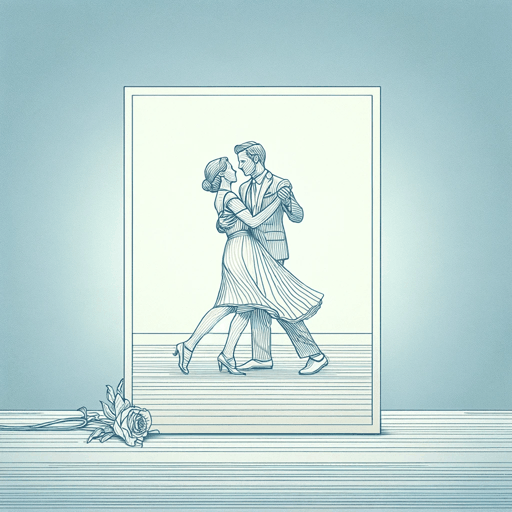17 pages • 34 minutes read
W. D. SnodgrassMementos, 1
Fiction | Poem | Adult | Published in 1987A modern alternative to SparkNotes and CliffsNotes, SuperSummary offers high-quality Study Guides with detailed chapter summaries and analysis of major themes, characters, and more.
Summary and Study Guide
Overview
First published in 1967 in the collection After Experience, W.D. Snodgrass’s “Mementos, 1” is a lyric poem reflecting upon the passage of time and the complicated feelings that remain after a failed relationship. The poem’s speaker retraces the hopeful beginnings and volatile ending of his marriage after rediscovering a photo of his former wife, the memento of the poem’s title. In doing so, he also reflects upon the gradual erosion of youthful idealism and the enduring tenacity of human connection. With its arresting first-person speaker and raw, direct approach to its subject matter, “Mementos, 1” embodies the “confessional” style of poetry Snodgrass had initially achieved critical acclaim for in his Pulitzer Prize-winning debut Heart’s Needle (1959) a decade earlier.
Poet Biography
William De Witt Snodgrass—known as W.D. Snodgrass in his literary career—was born on January 5, 1926, in Pennsylvania. He was raised and educated in Beaver Falls, attending Geneva College there until he began serving in the US Navy in 1944. He served as a typist during the Pacific War between the United States and Imperial Japan.
After the end of World War II, Snodgrass returned to university, taking both a BA and an MA at the University of Iowa. While at the university, Snodgrass joined the Iowa Writers’ Workshop and came under the mentorship of the poet Robert Lowell. At first, Lowell did not approve of the poetic style Snodgrass was developing, which was an intensely personal lyrical voice that drew upon autobiographical experience and the mundane realities of life. With time, Lowell began to admire Snodgrass’s work, eventually helping him find a publisher for his first collection Heart’s Needle in 1959. Heart’s Needle garnered significant critical attention and acclaim and won the Pulitzer Prize.
Due to the deeply personal nature of the poems in Heart’s Needle, literary critics deemed Snodgrass the originator of a new “confessional” style in American poetry. While the confessional movement would prove highly influential and could count Sylvia Plath and Ted Hughes among its disciples, the movement was also controversial. Some critics claimed the excessively personal nature of the works led to too much self-centered sentimentality, damaging the aesthetic quality of the poetry. Snodgrass himself disliked the term and eventually blamed the “confessional” label for his waning popularity in later years of his career. His second collection, After Experience, was first published in 1967. The collection drew a mixed critical response, with some claiming that the confessional mode was now exhausted and out of step with the times. After Experience features some of the same themes as Heart’s Needle, with Snodgrass reflecting upon lost love and personal experiences. “Mementos, 1” is included in After Experience.
In spite of the mixed nature of his works’ critical reception for much of his career, Snodgrass maintained many admirers and was quite prolific, publishing a number of poetry collections over the years alongside essays, translations, and a play. He also taught for 40 years at universities, such as Cornell University and the University of Delaware, and retired in 1995. He was married four times, with the first three marriages ending in divorce, and had two children. He died on January 13th, 2009, shortly after his 83rd birthday.
Poem Text
Snodgrass, W.D. “Mementos, 1.” 1967. Poetry Foundation.
Summary
“Mementos, 1” is a lyric poem that reflects upon memories of lost youth, love, and disillusionment. The poem opens with the speaker sorting through various mementos he has accumulated over the years, some commonplace and others personal. While doing so, he rediscovers a photograph of his ex-wife taken during their first dance together. He reflects upon her youth and beauty, recalling how deeply she captivated him when they first met. He then remembers how he carried the photograph with him during his service in World War II in the battle against the Japanese and how the idealism of his feelings for her sustained him. In the poem’s final stanza, the speaker turns to recollecting the decline of their relationship post-war, which ultimately culminated in divorce. In spite of the sad ending of their relationship, the speaker chooses to keep the photograph, anticipating how he will one day come across it again.

